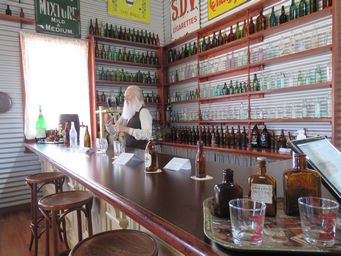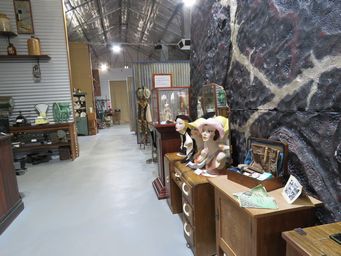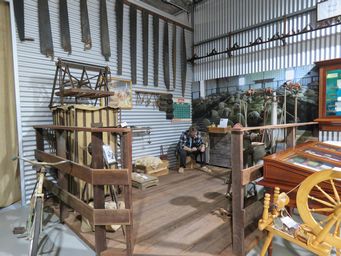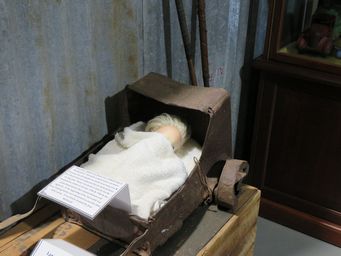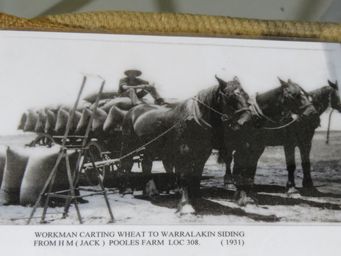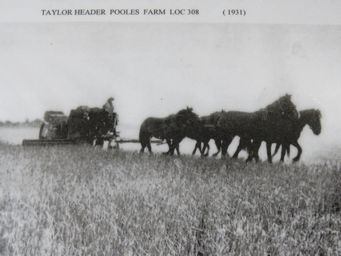Australia So Much to See
This display cabinet is dedicated to Alfred David Weston, and shows photographs of Weston with his children, and his wife. The
gold nugget on a three-bar broach depicted here is possibly the first nugget Weston found, and was given to his eldest child, Kathleen. The three bars on the broach represent his three children. Of his first found nuggets, one was given to each child. These photographs
were donated by Weston's granddaughter, Marlene Mannion. Picks used for digging add to this display.
The Hood-Penn Museum in Westonia features the generous donation of a large historical collection from the Hood-Penn family who previously
owned the Burracoppin Store.
The display here represents a garage and fuel outlet, from when cars became used
in the 1940s and 1950s.
A red manual petrol pump is to the left.
References
The museum also includes a vibrating mine tunnel that aims to replicate working in an early Westonian gold mine. Visitors press
a button upon entering the tunnel then experience a three minute sequence of sound effects and physical vibrations that simulate blasts
going off in the underground mine. The sound effects include a conversation between miners working in the mine.
Some of Chris Hood-Penn's bottle collection is housed in the cupboards in this display. He started his bottle collection around Burracoppin when he was nine years old, and over the years amassed a significant collection of various items, the basis of this museum.
This pram/pusher was found on a rubbish heap at Boodarockin. The body is made from a cut-down kerosene tin, the handles made
from hoop iron, and the wheels from two camp pie tins. Kindly donated by Joan McDowell.
Kerosene was the fuel used for home lighting, heating and refrigeration. The used tins were re-used for many purposes by resourceful settlers, and were commonly made into buckets for stock feed and water carrying.
The museum features a variety of scenes showcasing early life in the shire including a nursing post, a pub scene, a shop/hardware
store scene, a petrol station/garage scene, a kitchen scene, a bedroom scene and a blacksmith/farm workshop scene.
Life sized models
are realistic at first glance. These were made in Melbourne, modelled on actual present residents of Westonia. For example,
the bartender that looks so realistic, is based on the local builded who restored the hotel building. Bottles from the
Hood-Penn collection fill the shelves behind the bartender.



